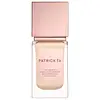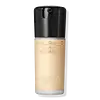Patrick Ta Major Skin Hydra-Luxe Luminous Skin Perfecting Foundation Versus Mac Cosmetics Studio Radiance Serum-Powered Foundation
What's inside
What's inside
 Key Ingredients
Key Ingredients

 Benefits
Benefits

 Concerns
Concerns

 Ingredients Side-by-side
Ingredients Side-by-side

Water
Skin ConditioningGlycerin
HumectantIsononyl Isononanoate
EmollientPropanediol
SolventDicaprylyl Ether
EmollientSqualane
EmollientPentaerythrityl Tetraisostearate
EmollientHydrogenated Styrene/Methylstyrene/Indene Copolymer
Hydrogenated Ethylhexyl Olivate
EmollientPolyglyceryl-6 Polyricinoleate
EmulsifyingPolyglyceryl-2 Dipolyhydroxystearate
Skin ConditioningIsostearyl Neopentanoate
EmollientC9-12 Alkane
SolventDimer Dilinoleyl Dimer Dilinoleate
EmollientPolyglyceryl-2 Isostearate
EmulsifyingPvp
Emulsion StabilisingLauroyl Lysine
Skin ConditioningDipalmitoyl Hydroxyproline
Skin ConditioningMyristyl Myristate
EmollientMagnesium Sulfate
Disteardimonium Hectorite
StabilisingLecithin
EmollientPhenoxyethanol
PreservativePropylene Carbonate
SolventZinc Stearate
Cosmetic ColorantOctyldodecyl Stearoyl Stearate
EmollientHydrogenated Lecithin
EmulsifyingButyrospermum Parkii Butter
Skin ConditioningSodium Benzoate
MaskingSaccharomyces/Xylinum/Black Tea Ferment
Skin ConditioningDistarch Phosphate
AbsorbentAllantoin
Skin ConditioningHydrogenated Olive Oil Unsaponifiables
EmollientCoco-Caprylate/Caprate
EmollientTocopherol
AntioxidantSodium Hyaluronate
HumectantSodium Dehydroacetate
PreservativeHelianthus Annuus Seed Oil
EmollientPentaerythrityl Tetra-Di-T-Butyl Hydroxyhydrocinnamate
AntioxidantPotassium Sorbate
PreservativeCI 77891
Cosmetic ColorantIron Oxides
Water, Glycerin, Isononyl Isononanoate, Propanediol, Dicaprylyl Ether, Squalane, Pentaerythrityl Tetraisostearate, Hydrogenated Styrene/Methylstyrene/Indene Copolymer, Hydrogenated Ethylhexyl Olivate, Polyglyceryl-6 Polyricinoleate, Polyglyceryl-2 Dipolyhydroxystearate, Isostearyl Neopentanoate, C9-12 Alkane, Dimer Dilinoleyl Dimer Dilinoleate, Polyglyceryl-2 Isostearate, Pvp, Lauroyl Lysine, Dipalmitoyl Hydroxyproline, Myristyl Myristate, Magnesium Sulfate, Disteardimonium Hectorite, Lecithin, Phenoxyethanol, Propylene Carbonate, Zinc Stearate, Octyldodecyl Stearoyl Stearate, Hydrogenated Lecithin, Butyrospermum Parkii Butter, Sodium Benzoate, Saccharomyces/Xylinum/Black Tea Ferment, Distarch Phosphate, Allantoin, Hydrogenated Olive Oil Unsaponifiables, Coco-Caprylate/Caprate, Tocopherol, Sodium Hyaluronate, Sodium Dehydroacetate, Helianthus Annuus Seed Oil, Pentaerythrityl Tetra-Di-T-Butyl Hydroxyhydrocinnamate, Potassium Sorbate, CI 77891, Iron Oxides
Water
Skin ConditioningPhenyl Trimethicone
Skin ConditioningTricaprylin
MaskingGlycerin
HumectantButylene Glycol
HumectantC9-12 Alkane
SolventLauryl PEG-9 Polydimethylsiloxyethyl Dimethicone
Skin ConditioningOctyldodecanol
EmollientTrimethylsiloxysilicate
EmollientPolyglyceryl-2 Triisostearate
EmulsifyingOlea Europaea Fruit Oil
MaskingSimmondsia Chinensis Seed Oil
EmollientPPG-12/Smdi Copolymer
EmollientC12-15 Alkyl Benzoate
AntimicrobialPEG/PPG/Polybutylene Glycol-8/5/3 Glycerin
HumectantPolymethylsilsesquioxane
Sodium Hyaluronate
HumectantHydrolyzed Sodium Hyaluronate
Skin ConditioningHelianthus Annuus Seed Extract
Skin ConditioningCucumis Sativus Fruit Extract
EmollientTremella Fuciformis Sporocarp Extract
AntioxidantHordeum Vulgare Extract
EmollientTocopheryl Acetate
AntioxidantSorbitol
HumectantTrehalose
HumectantLecithin
EmollientDisteardimonium Hectorite
StabilisingOctyldodecyl Xyloside
EmulsifyingPropylene Glycol Dicaprate
EmollientPolyglyceryl-3 Diisostearate
EmulsifyingTriethyl Citrate
MaskingDisodium Stearoyl Glutamate
CleansingPvp
Emulsion StabilisingSilica
AbrasivePolysorbate 60
EmulsifyingSorbitan Isostearate
EmulsifyingBetaine
HumectantDimethicone
EmollientHdi/PPG/Polycaprolactone Crosspolymer
Synthetic Fluorphlogopite
Tin Oxide
AbrasivePEG-30 Dipolyhydroxystearate
EmulsifyingHydroxyethyl Acrylate/Sodium Acryloyldimethyl Taurate Copolymer
Emulsion StabilisingAluminum Dimyristate
Emulsion StabilisingCitric Acid
BufferingSilica Dimethicone Silylate
AbsorbentTriethoxycaprylylsilane
Hydroxyacetophenone
AntioxidantBHT
AntioxidantDisodium EDTA
Caprylyl Glycol
EmollientSodium Dehydroacetate
PreservativePotassium Sorbate
PreservativePhenoxyethanol
PreservativeCI 77891
Cosmetic ColorantCI 77492
Cosmetic ColorantCI 77491
Cosmetic ColorantCI 77499
Cosmetic ColorantWater, Phenyl Trimethicone, Tricaprylin, Glycerin, Butylene Glycol, C9-12 Alkane, Lauryl PEG-9 Polydimethylsiloxyethyl Dimethicone, Octyldodecanol, Trimethylsiloxysilicate, Polyglyceryl-2 Triisostearate, Olea Europaea Fruit Oil, Simmondsia Chinensis Seed Oil, PPG-12/Smdi Copolymer, C12-15 Alkyl Benzoate, PEG/PPG/Polybutylene Glycol-8/5/3 Glycerin, Polymethylsilsesquioxane, Sodium Hyaluronate, Hydrolyzed Sodium Hyaluronate, Helianthus Annuus Seed Extract, Cucumis Sativus Fruit Extract, Tremella Fuciformis Sporocarp Extract, Hordeum Vulgare Extract, Tocopheryl Acetate, Sorbitol, Trehalose, Lecithin, Disteardimonium Hectorite, Octyldodecyl Xyloside, Propylene Glycol Dicaprate, Polyglyceryl-3 Diisostearate, Triethyl Citrate, Disodium Stearoyl Glutamate, Pvp, Silica, Polysorbate 60, Sorbitan Isostearate, Betaine, Dimethicone, Hdi/PPG/Polycaprolactone Crosspolymer, Synthetic Fluorphlogopite, Tin Oxide, PEG-30 Dipolyhydroxystearate, Hydroxyethyl Acrylate/Sodium Acryloyldimethyl Taurate Copolymer, Aluminum Dimyristate, Citric Acid, Silica Dimethicone Silylate, Triethoxycaprylylsilane, Hydroxyacetophenone, BHT, Disodium EDTA, Caprylyl Glycol, Sodium Dehydroacetate, Potassium Sorbate, Phenoxyethanol, CI 77891, CI 77492, CI 77491, CI 77499
 Reviews
Reviews

Ingredients Explained
These ingredients are found in both products.
Ingredients higher up in an ingredient list are typically present in a larger amount.
C9-12 Alkane is synethically created using alkanes, or paraffins. It is added to products as a solvent. This means its main purpose is to help dissolve ingredients and create even texture.
Ci 77891 is a white pigment from Titanium dioxide. It is naturally found in minerals such as rutile and ilmenite.
It's main function is to add a white color to cosmetics. It can also be mixed with other colors to create different shades.
Ci 77891 is commonly found in sunscreens due to its ability to block UV rays.
Learn more about CI 77891Disteardimonium Hectorite comes from the clay mineral named hectorite. It is used to add thickness to a product.
It can also help stabilize a product by helping to disperse other ingredients.
Hectorite is a rare, white clay mineral.
Learn more about Disteardimonium HectoriteGlycerin is already naturally found in your skin. It helps moisturize and protect your skin.
A study from 2016 found glycerin to be more effective as a humectant than AHAs and hyaluronic acid.
As a humectant, it helps the skin stay hydrated by pulling moisture to your skin. The low molecular weight of glycerin allows it to pull moisture into the deeper layers of your skin.
Hydrated skin improves your skin barrier; Your skin barrier helps protect against irritants and bacteria.
Glycerin has also been found to have antimicrobial and antiviral properties. Due to these properties, glycerin is often used in wound and burn treatments.
In cosmetics, glycerin is usually derived from plants such as soybean or palm. However, it can also be sourced from animals, such as tallow or animal fat.
This ingredient is organic, colorless, odorless, and non-toxic.
Glycerin is the name for this ingredient in American English. British English uses Glycerol/Glycerine.
Learn more about GlycerinLecithin is a term for a group of substances found in the cell membranes of plants, animals, and humans. They are made up of mixture of phospholipids.
This ingredient has emollient and emulsifying properties.
As an emollient, lecithen helps soften the skin and creates a barrier to keep moisture in.
As an emulsifier, it also helps prevent water and oil ingredients from separating. Lecithin can also help ingredients be better absorbed by the skin.
This is because the phospholipids in lecithin produce liposomes. Liposomes help other ingredients get through the skin barrier.
Depending on the source of this ingredient, lecithin may not be fungal acne safe. This is because some sources of lecithin come from soybean oil, which may feed the malassezia yeast that feeds fungal acne.
We recommend reaching out to the brand you are purchasing from to inquire about the source of their lecithin.
Some other names for this ingredient include soy lecithin and deoiled soy lecithin.
Learn more about LecithinPhenoxyethanol is a preservative that has germicide, antimicrobial, and aromatic properties. Studies show that phenoxyethanol can prevent microbial growth. By itself, it has a scent that is similar to that of a rose.
It's often used in formulations along with Caprylyl Glycol to preserve the shelf life of products.
Potassium Sorbate is a preservative used to prevent yeast and mold in products. It is commonly found in both cosmetic and food products.
This ingredient comes from potassium salt derived from sorbic acid. Sorbic acid is a natural antibiotic and effective against fungus.
Both potassium sorbate and sorbic acid can be found in baked goods, cheeses, dried meats, dried fruit, ice cream, pickles, wine, yogurt, and more.
You'll often find this ingredient used with other preservatives.
Learn more about Potassium SorbatePvp is a water-soluble synthetic polymer and common hairstyling ingredient. It is a film-forming ingredient and used to "hold" specific shapes of hair.
Pvp is less effective in high-humidity. It tends to draw moisture, but this moisture dismantles the structure and "hold".
This ingredient is a preservative with antimicrobial properties. It is the sodium salt of dehydroacetic acid.
It is especially effective at preventing bacterial and fungal growth in low concentrations.
Sodium Hyaluronate is hyaluronic acid's salt form. It is commonly derived from the sodium salt of hyaluronic acid.
Like hyaluronic acid, it is great at holding water and acts as a humectant. This makes it a great skin hydrating ingredient.
Sodium Hyaluronate is naturally occurring in our bodies and is mostly found in eye fluid and joints.
These are some other common types of Hyaluronic Acid:
Learn more about Sodium HyaluronateWater. It's the most common cosmetic ingredient of all. You'll usually see it at the top of ingredient lists, meaning that it makes up the largest part of the product.
So why is it so popular? Water most often acts as a solvent - this means that it helps dissolve other ingredients into the formulation.
You'll also recognize water as that liquid we all need to stay alive. If you see this, drink a glass of water. Stay hydrated!
Learn more about Water